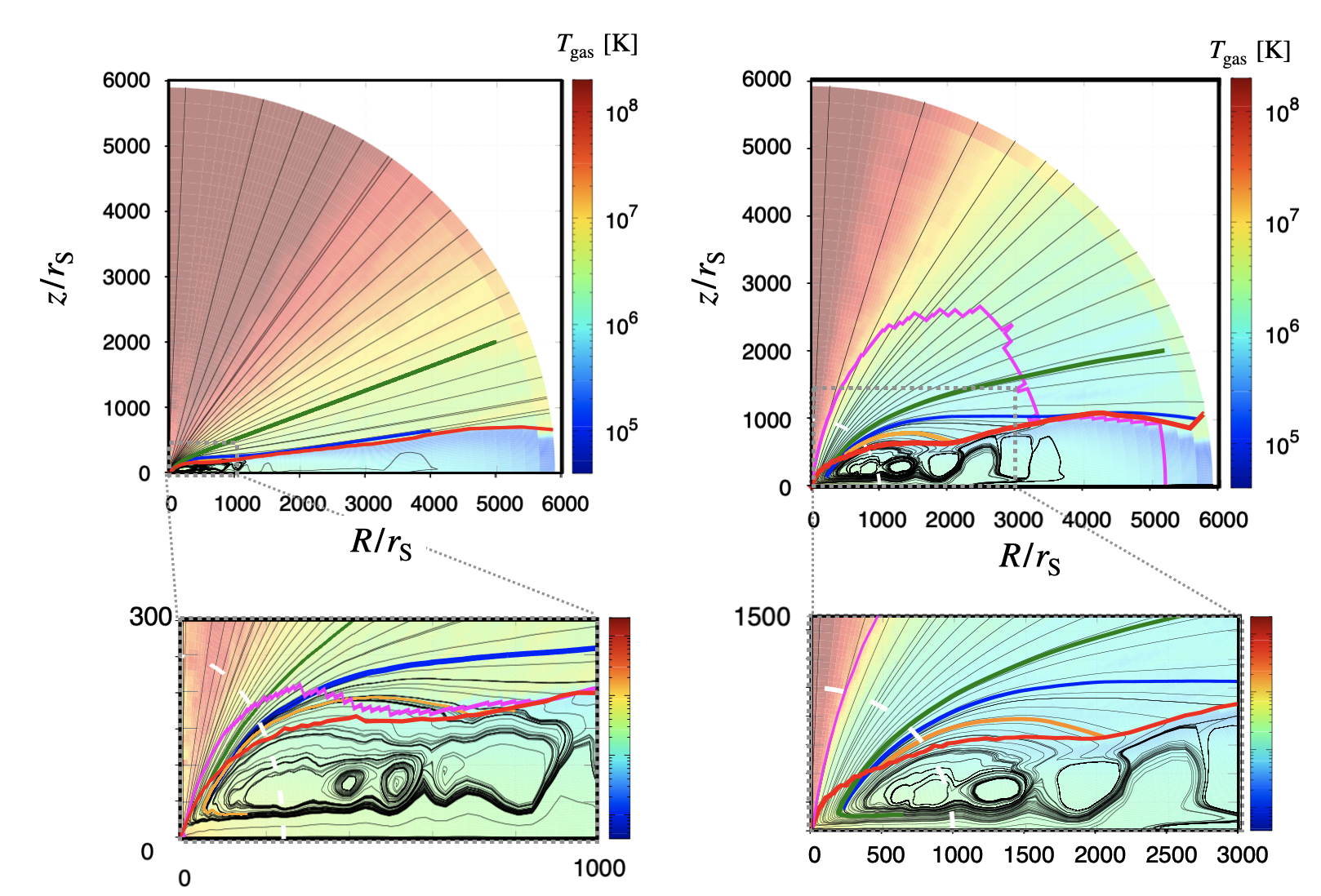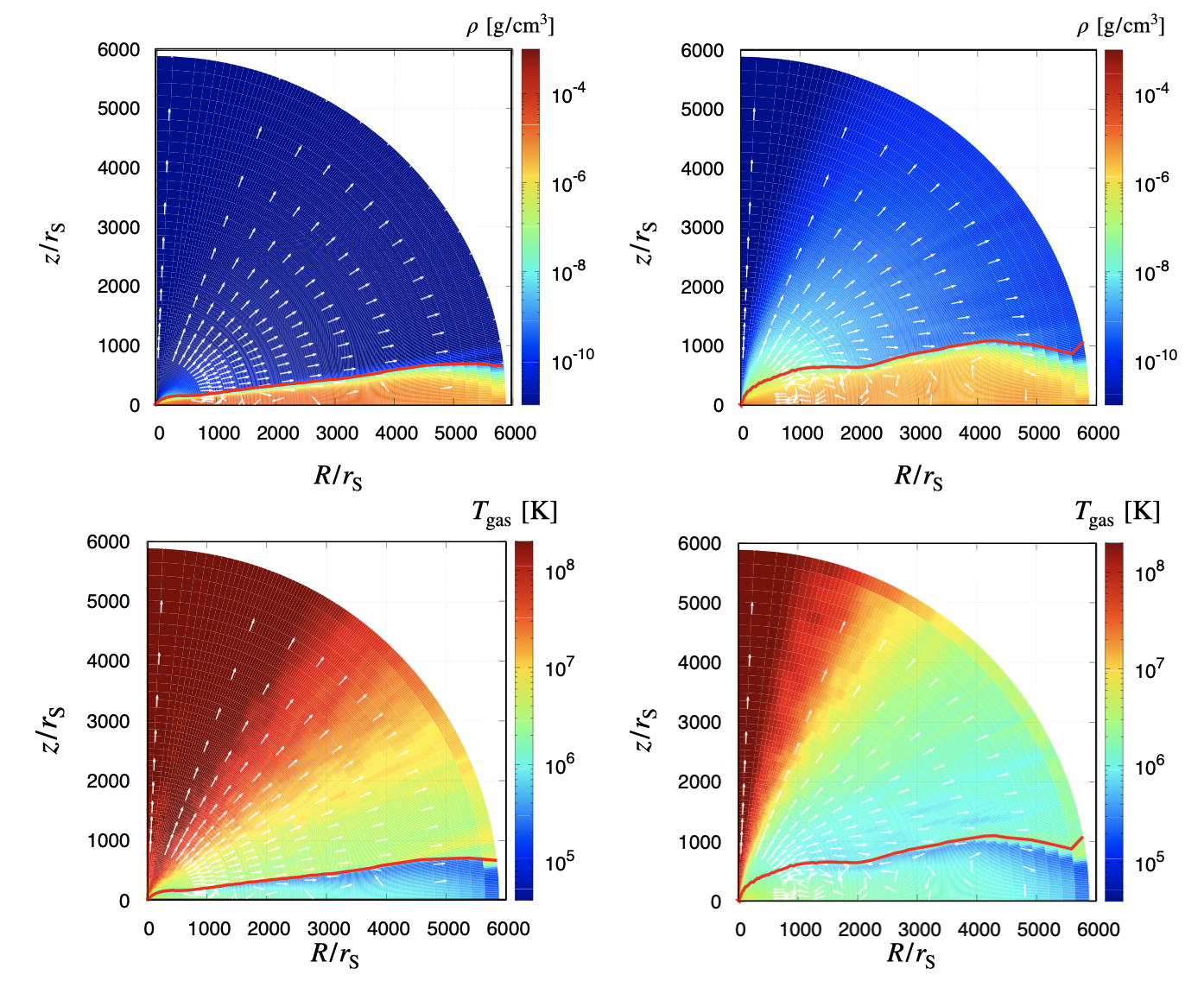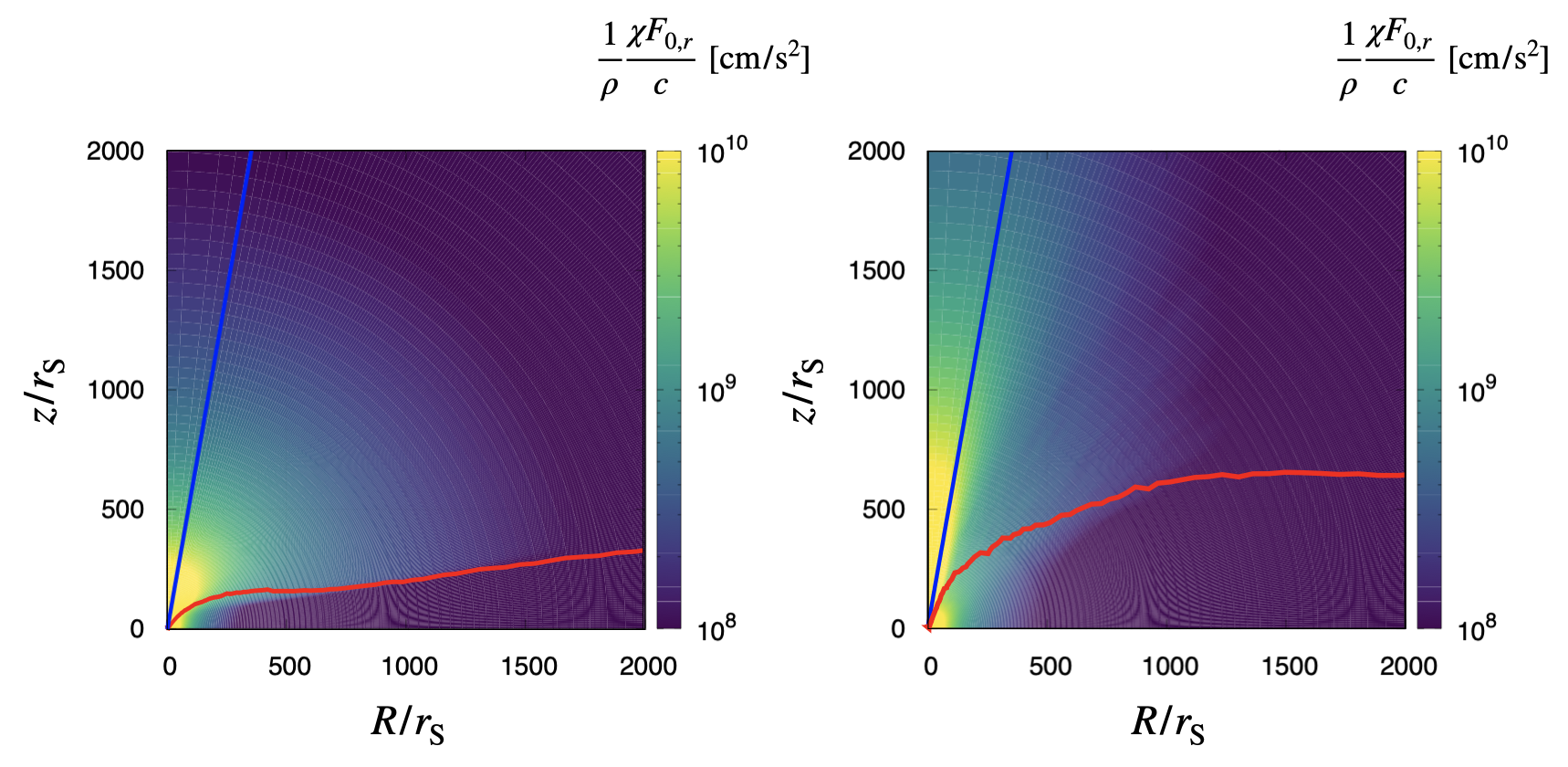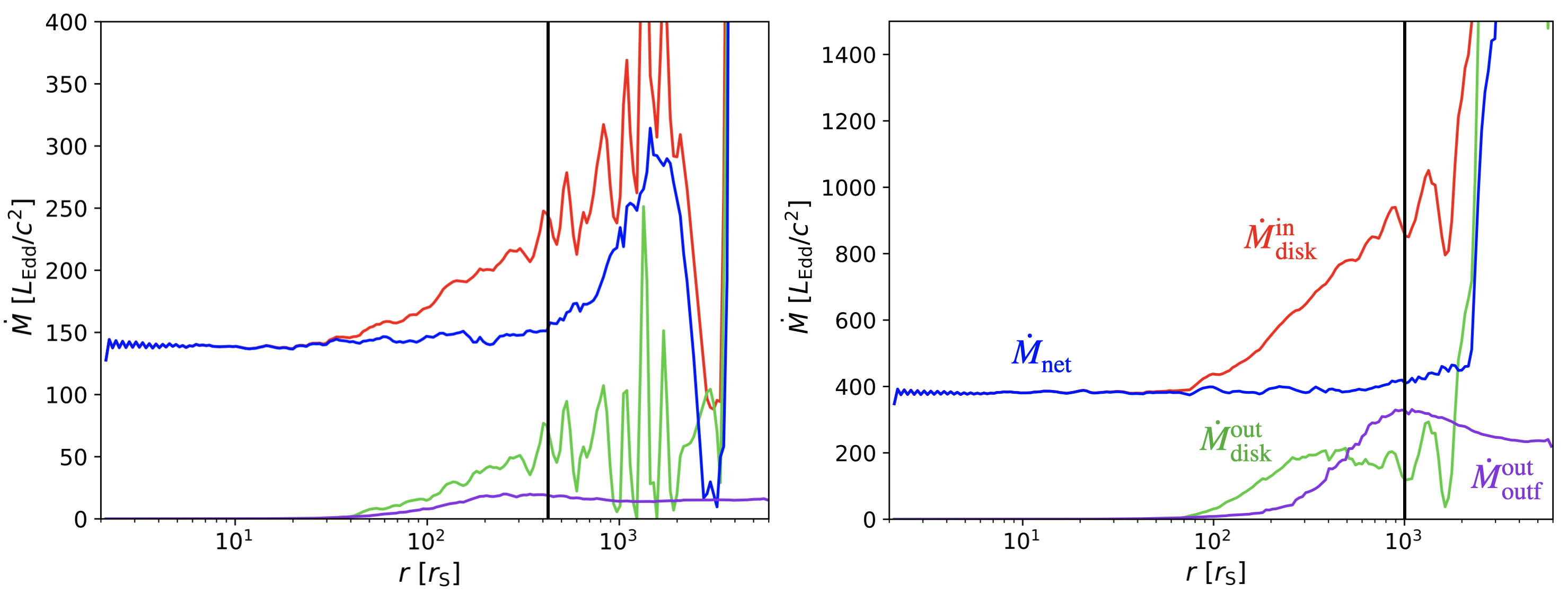研究成果・発表論文
Large-scale outflow structure and radiation properties of super-Eddington flow: Dependence on the accretion rates
Yoshioka, Shogo, Mineshige, Shin, Ohsuga, Ken, Kawashima, Tomohisa, & Kitaki, Takaaki
要旨
In order to evaluate the impacts made by super-Eddington accretors on their environments precisely, it is essential to guarantee a large enough simulation box and long computational time to avoid any artefacts from numerical settings as much as possible. In this paper, we carry out axisymmetric two-dimensional radiation hydrodynamic simulations around a 10 M⊙ black hole in large simulation boxes and study the large-scale outflow structure and radiation properties of super-Eddington accretion flow for a variety of black hole accretion rates, ṀBH = (110-380)LEdd∕c2 (with LEdd being the Eddington luminosity and c being the speed of light). The Keplerian radius of the inflow material, at which centrifugal force balances with gravitational force, is fixed to 2430 Schwarzschild radii. We find that the mechanical luminosity grows more rapidly than the radiation luminosity with an increase of ṀBH. When seen from a nearly face-on direction, especially, the isotropic mechanical luminosity grows in proportion to ṀBH 2.7, while the total mechanical luminosity is proportional to ṀBH 1.7. The reason for the former is that the higher ṀBH is, the more vertically inflated the disk surface becomes, which makes radiation fields more confined in the region around the rotation axis, thereby strongly accelerating outflowing gas. The outflow is classified into pure outflow and failed outflow, depending on whether the outflowing gas can reach the outer boundary of the simulation box or not. The fraction of the failed outflow decreases with a decrease of ṀBH. We analyze physical quantities along each outflow trajectory, finding that the Bernoulli parameter (Be) is not a good indicator to discriminate between pure and failed outflows, since it is never constant because of continuous acceleration by radiation-pressure force. Pure outflow can arise, even if Be < 0 at the launching point.








 Ja En
Ja En